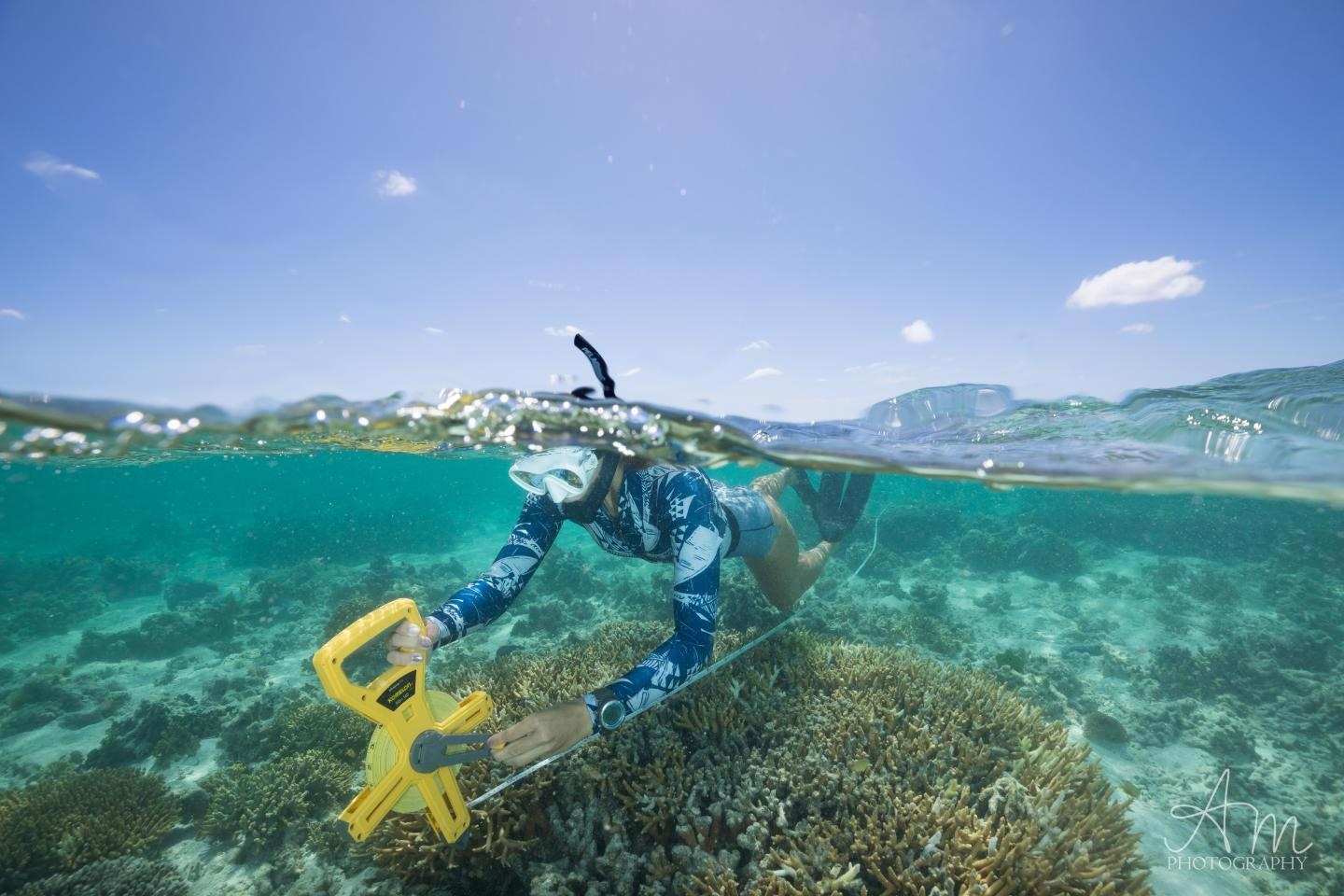Jun 11 2021
According to a new study performed by the Southern Cross University, if the trend of dwindling coral growth continues at the present rate, the coral reefs in the world may stop calcifying by around 2054.
 Dr. Kay Davis conducts a benthic survey on a flat reef at Heron Island, Great Barrier Reef, Australia in December 2020. Below her, the coral has healthy, bleached and dead sections. Image Credit: Ashly McMahon.
Dr. Kay Davis conducts a benthic survey on a flat reef at Heron Island, Great Barrier Reef, Australia in December 2020. Below her, the coral has healthy, bleached and dead sections. Image Credit: Ashly McMahon.
Based on studies from the late 1960s until now, the new article revealed the drivers of coral reef ecosystem growth (called calcification) and the global spatiotemporal trends. The study was published in the journal, Nature Communications Earth and Environment. In total, 116 studies from 53 published papers were studied.
It is known that coral reefs have been degrading over time. Our study relies on historical data to quantify the current rate of decline and indicates what could be happening in the future. Our work complements quite a few other studies that indicate net coral reef dissolution by mid-century, between 2030 and 2080.
Dr Kay Davis, Project Leader, Southern Cross University
Case studies included sites from all over the world. Among these, Australia (Great Barrier Reef, Western Australia reefs, and Lord Howe Island) was the most researched country. Other case studies included reef sites in the Red Sea, Hawaii, Japan, Bermuda, and French Polynesia, among others.
Repeat observations at the same sites can provide insight into how coral reefs are responding to changing environmental conditions on a global scale. But these repeat surveys of calcification and productivity have only been carried out at seven sites.
Dr Kay Davis, Project Leader, Southern Cross University
The reduced rate of global calcification may be associated with the dwindling coral cover and declining health of the remaining corals.
We found that rates of coral ecosystem calcification are significantly declining at an average rate of 4.3% ± 1.9% yr-1 with a concurrent reduction in mean coral cover of 1.8% yr-1. This suggests that loss of coral cover may not be the sole contributor of declining calcification. Stress events, like coral bleaching, can impact calcification, even without coral death. Corals improve their chances of survival during stressful times by temporarily reducing calcification.
Dr Kay Davis, Project Leader, Southern Cross University
To preserve the coral reefs, individual corals should grow to sustain the ecosystem with food and habitat. The growth of corals is known as “calcification.” As corals consume calcium carbonate (CaCO3) from the water column to create their skeletons, calcification rates can be established through changes in water chemistry.
Coral dissolution is the exact opposite in which the skeletons discharge CaCO3 back into the water, normally during periods of stress or when there is no productivity. The greater the rate of net growth (calcification-dissolution), the more calcifying algae and reef-building corals are creating for the ecosystem.
The University’s National Marine Science Centre in Coffs Harbor has a special analytical infrastructure to identify slight variations in seawater chemistry needed to measure the ecosystem calcification of coral reefs.
Journal Reference:
Davis, K. L., et al. (2021) Global coral reef ecosystems exhibit declining calcification and increasing primary productivity. Communications Earth & Environment. doi.org/10.1038/s43247-021-00168-w.